
The southern end of La Costa Brava is home to three of its most famous towns: Blanes, Lloret de Mar, and Tossa de Mar. Blanes is the only Costa Brava town with a direct rail service to and from Barcelona; Lloret was one of the first resorts to gain international fame for its package holidays and party scene; and Tossa is renowned for its beautiful old town and fort overlooking its beach.
Costa Brava South
Costa Brava South has the advantage (or disadvantage, depending on your point of view) of being the most easily accessible part of the Costa Brava from the Catalan capital, Barcelona, not only because of its southern location but also because there is a railway line that runs along the coast from Barcelona to Blanes – the first in Catalunya, and, indeed, all of Spain!
Once in Blanes, visitors can easily hop on a local bus that connects the three towns. If you’re in for a good walk, then why not walk along the gorgeous Costa Brava coastal trail, known as the Camino de Ronda? In total, it should take you about 6 hours to walk from Tossa de Mar along the coast to Blanes, via Lloret, but of course, you don’t have to do it all in one go! All three towns are in the comarca (county) of La Selva, the southernmost not only on La Costa Brava but also in the Provincia de Girona.
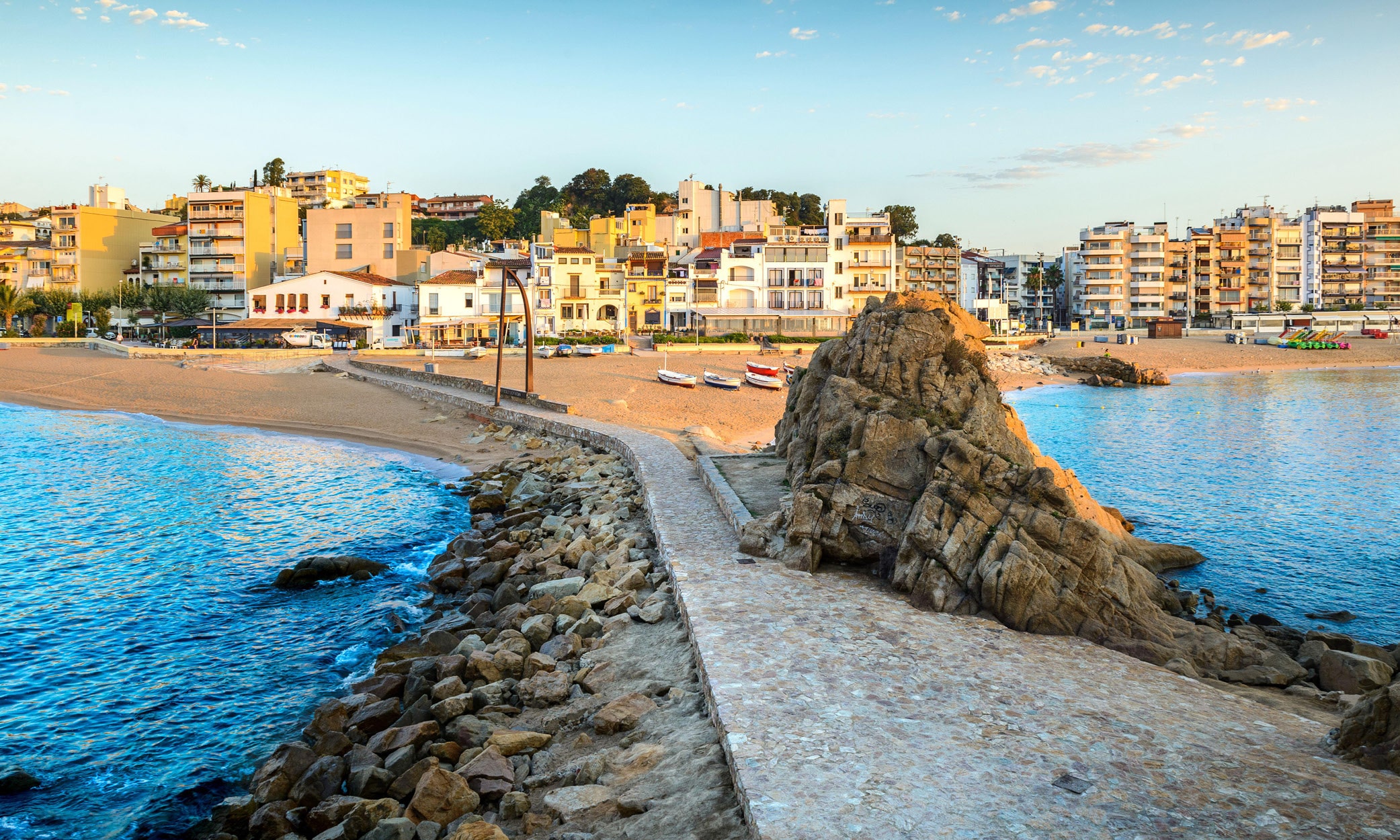
Blanes
Known in Roman times as Blanda or Blandae, Blanes is nowadays more commonly referred to as the Gateway to the Costa Brava. As was the case with the entire Costa Brava region, indigenous Iberians were already living here before the Romans arrived. After the Romans departed, it was occupied by the Goths and subsequently by the Moors. After the Reconquista, it became part of the Crown of Aragón and, eventually, Spain. Blanes was reduced to little more than ashes during the Reapers’ War in the 1600s and suffered further damage in the War of Spanish Succession. When peace returned, the town had to be virtually rebuilt.
Nowadays, Blanes is a town of approximately 39,000 inhabitants, renowned for its numerous events and activities throughout the year, most notably its Festa Major de Santa Anna and the International Fireworks Competition, which takes place as part of the festivities.

It is also known for its Marimurta Botanic Gardens, located just north of the port, and the much larger Pinya de Rosa Gardens, situated nearby, famous for their 7,000+ species of cacti. The 11-hectare Marimurta Botanic Gardens were founded in 1924 by German entrepreneur and naturalist Carl Faustare and are regarded as amongst the most beautiful in the Mediterranean. Of the 11 hectares, four were designed with three carefully planned thematic areas: subtropical, temperate, and Mediterranean. The other 7 hectares comprise a pine forest, offering walking routes that lead through a varied landscape of cork oaks, holm oaks, and myrtle bushes. The name Marimurtra is a combination of “mar” (meaning sea) and “murtra” (meaning myrtle).
There is also a 16th-century convent and, as is the case in several Costa Brava towns, there are colonial-style Indiano houses built by returning emigrants who had made their fortune in the Americas, especially the Caribbean. Oh yeah, there are some lovely beaches and coves, too, needless to say! Apart from the main beach in the town itself, there’s a longer and larger beach just to the south called Platja de S’Abanell and several smaller coves.

Lloret de Mar
Six kilometres to the north, Lloret de Mar has a similar population to Blanes, but is an altogether different type of town. Lloret is the best-known internationally of the three towns, as it began to open up to package tourism in the 1950s and was the first to experience the post-Franco tourist boom in the 1970s. It still retains some of that vibe to this day. It is said that Lloret has the highest concentration of hotels in the entire Mediterranean, and it has even been claimed that there are more hotels there than in the country of Greece! We’re not sure if that’s true (who keeps track of these things anyway?), but there are a lot of hotels!
Lauretum was what the Romans called the place way back when, supposedly because there were so many laurel trees, and that later evolved to Laureto by medieval times. At the northern end of the main beach, there is a small castle, Castell d’en Plaja, with fantastic views, although, as the walk up to it is pretty steep, most people seem to content themselves with admiring it from the beach below. Despite its medieval appearance, the castle was built in the 1930s and is privately owned.

Although it has several sights of cultural and historical interest, it is famous mainly for its nightlife scene. It attracts a younger crowd due to several discos and nightclubs, most of which party until 6 am. Once the hangovers have eased, there are also numerous options for water sports and activities available.
Lloret has a second beach to the south of town called Platja de Fenals, which is (somewhat) quieter than the main beach. At the southern end of this beach are the famous Jardins de Santa Clotilde, which gained even more fame as it was one of the filming locations for the Game of Thrones spin-off, House of the Dragon.


Suppose you decide to walk from town to Platja de Fenals along the Camino de Ronda. You’ll pass a statue of La Dona Marinera (Fisherman’s Wife) looking out to sea, hoping to catch sight of her husband returning to port after weeks or months at sea. This is a nod to the days before tourism became the primary source of income in Lloret de Mar, when the town primarily relied on fishing for its livelihood. It used to have a significant cork industry too, but that also disappeared when tourism took off.
Lloret has a few other beaches a little further from the town but still within the municipality, most notably Platja de Canyelles north of the town, and Platja Santa Cristina and Platja de sa Boadella (popular with naturists) to the south.
If you’re not really into walking, a more leisurely alternative method of transport is to take a boat excursion from Lloret de Mar to Tossa de Mar, which brings us nicely to our final (and our favourite) of the three towns: Tossa de Mar.
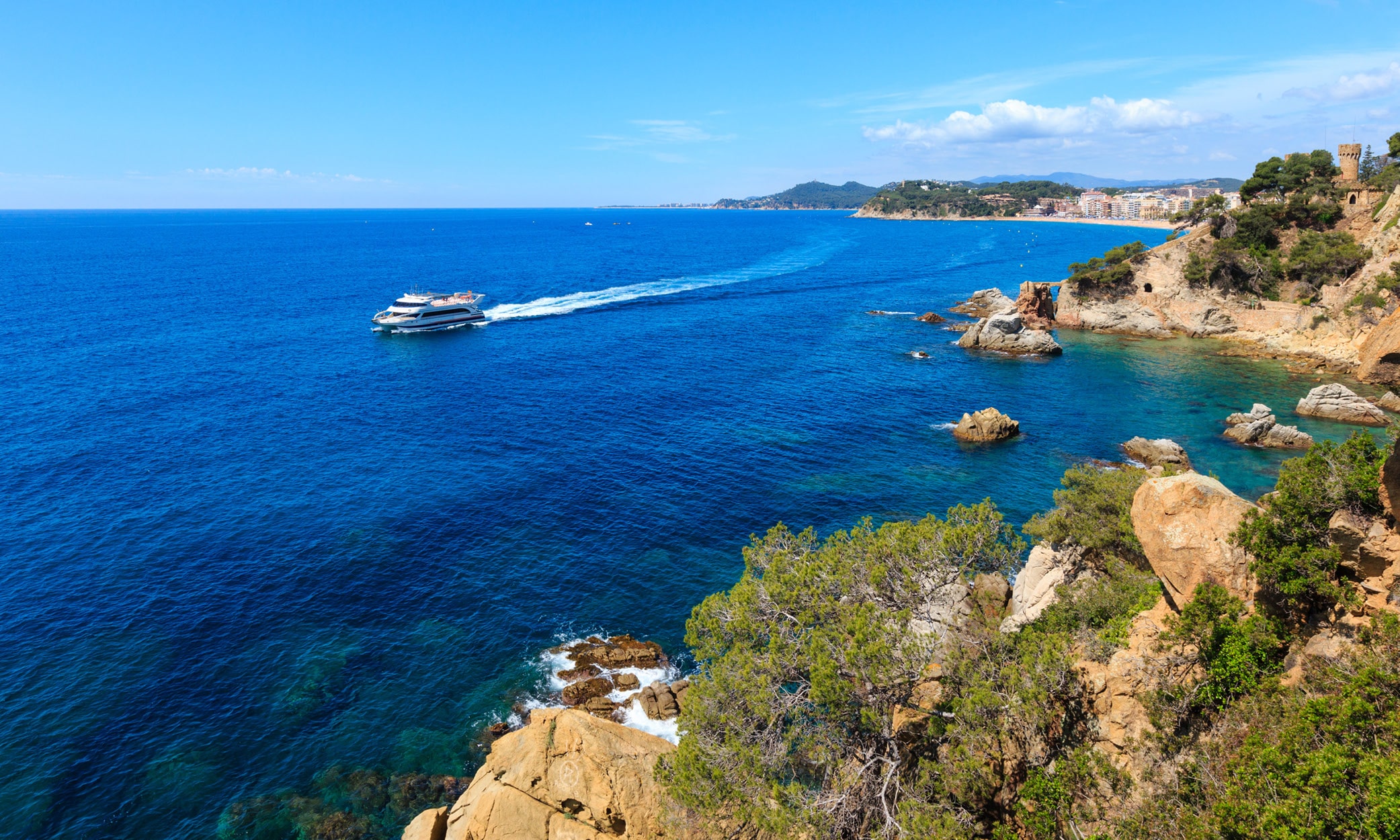

Tossa de Mar
And so to Tossa de Mar, arguably the pick of the three towns. Tossa is one of the most iconic towns on the entire Costa Brava, and it is not hard to understand why. Its beautifully preserved old town, complete with cobblestone streets and fortifications, overlooks the fine main beach, once named one of the best in the world by National Geographic in 2013. It was known as Turissa in Roman times and Tursa in medieval times, before eventually becoming “Tossa” de Mar, as it is known today.
It is smaller than Blanes and Lloret, with a year-round population of about 6,000 people, although, as you’d expect, that figure grows considerably during the summer. At one end of the beach, there’s a statue of the Roman goddess of wisdom, Minerva, looking out to sea and with great views towards the medieval walled town, La Vila Vella, at the other end.
The old town was built as a fort with a castle on its highest point during the 12th century. The castle was later replaced, first by a windmill and then by a still-operational lighthouse. Situated at the southern end of the main beach with views over the bay, Tossa de Mar is the only example of a fortified medieval village that still exists today on the Catalan coast. It played a crucial role in defending against pirates who plagued the Mediterranean for centuries during the Middle Ages.

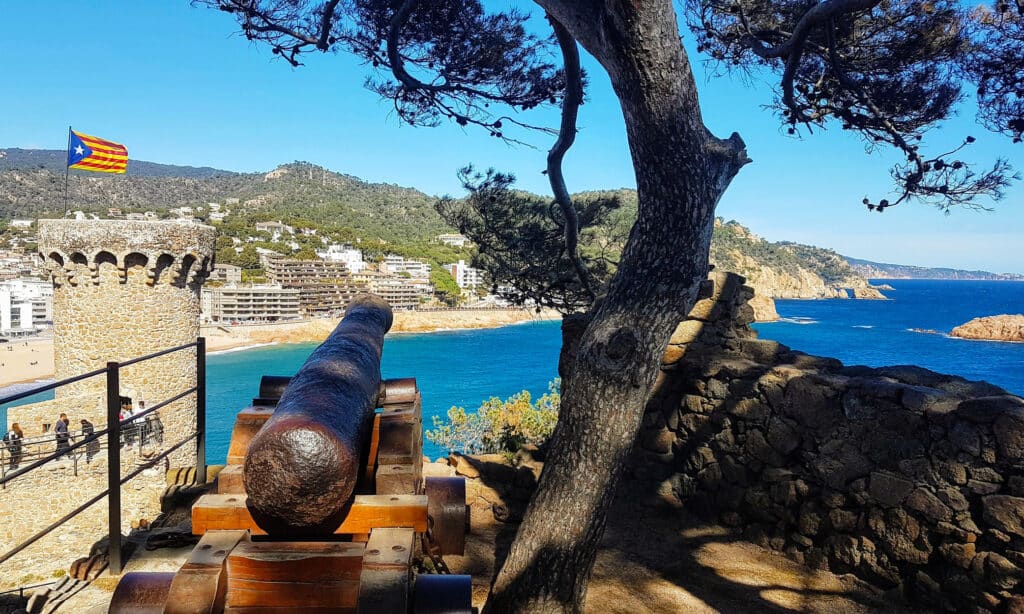
When King Felipe II, known as Felipe el Prudente, ascended to the throne of Spain in 1556, he set about building defensive watchtowers within sight of each other along the Mediterranean coast to warn of Barbary pirate attacks. If raiders were spotted, a fire would be lit to raise the alarm, and the signal relayed from tower to tower – just like in the “Lighting of the Beacons” scene in Lord of the Rings: The Return of the King! A fine example of one such tower can still be seen today overlooking the Vila Vella of Tossa de Mar, and although its name is Torre de Can Magí, it is also known as the Torre des Moros or “Tower of the Moors”.
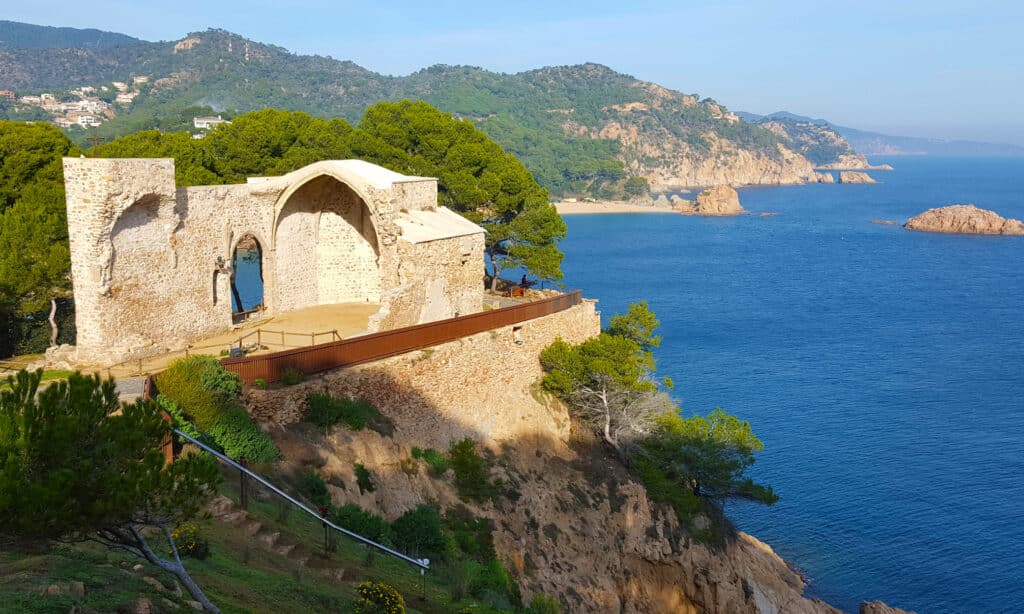
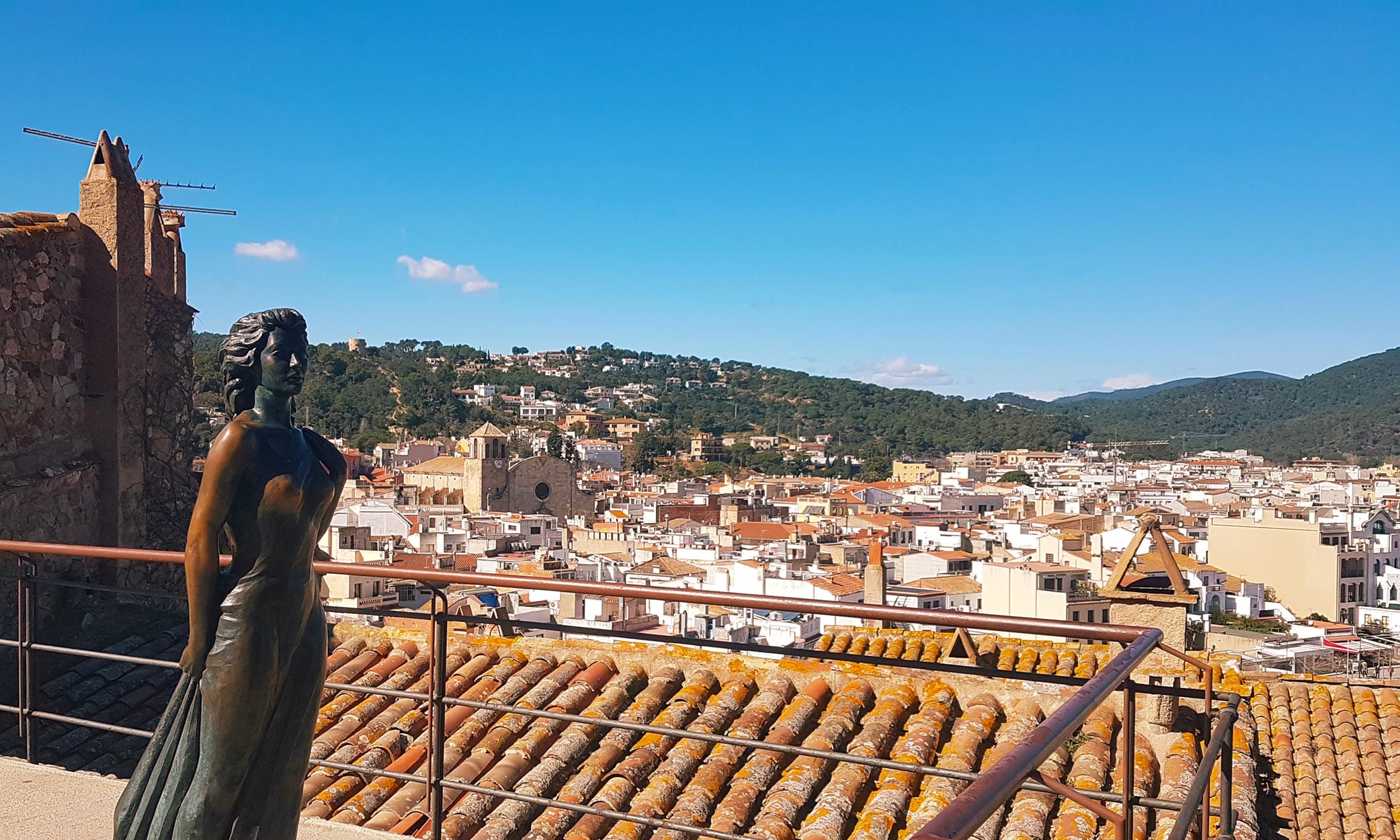
Perfectly preserved since the 14th century, the walled medieval town and fortifications have made it an ideal filming location over the years. The movie most famously filmed there was “Pandora and the Flying Dutchman” – “most famously” probably for its biggest star, Ava Gardner, and her lover, Frank Sinatra, who travelled to the town when he began to suspect that she was cheating on him with one of her co-stars. It turned out Sinatra was right, and the ensuing drama and media scandal that followed the story, along with all the related gossip, put Tossa de Mar on the international map! There is a statue of Ava Gardner in the old town of Tossa today, maybe in thanks for all the publicity!
Apart from Ava Gardner and the gorgeous walled medieval town, Tossa de Mar has some beautiful beaches. As we mentioned, the main beach was named in National Geographic’s Top 25 back in 2013, but there are plenty of others. Immediately below the Vila Vella, to the other side, is the Cala Es Codolar, and just to the north of town is the larger Platja Mar Menuda.
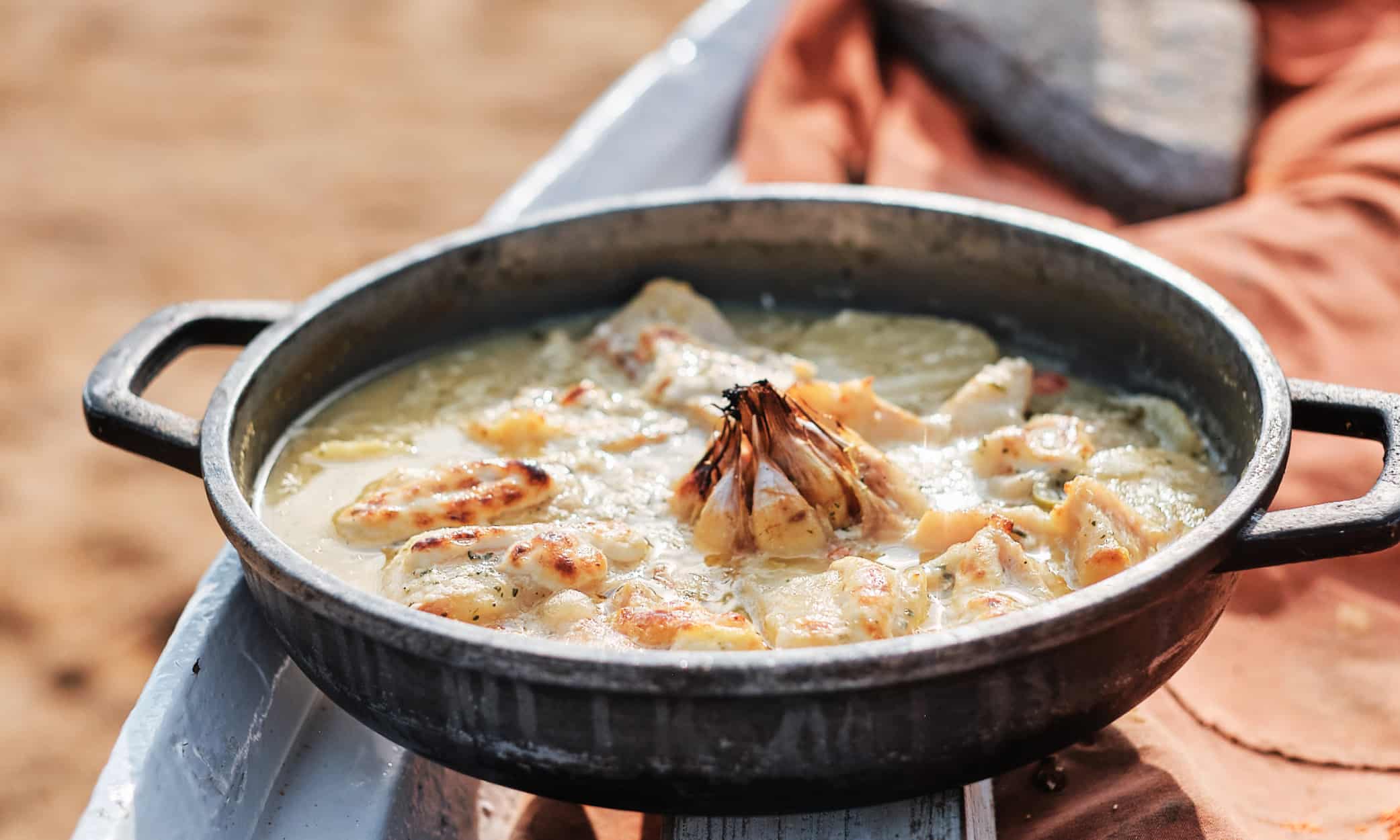
Cim i Tomba
In common with almost everywhere on the Costa Brava, the local gastronomy involves lots of fish and seafood. You’ll find all the usual Catalan dishes, but in Tossa de Mar, they have their special dish, called Cim i Tomba. It’s a type of casserole with fish and potatoes, but we won’t say much more than that, as there are as many variations as there are chefs in Tossa, each with their unique adaptation. Every September, Tossa host a La Cuina del Cim i Tomba gastronomic campaign with several restaurants participating with special menus over a set period.
Years ago, when Tossa’s fishermen were at sea for long hours, they used to take on board with them a small stove, charcoal, a mortar and an iron pot, and a basket containing potatoes, onions, garlic cloves, tomatoes, peppers, oil and spices (salt, black pepper, saffron, etc.) to make their lunch. One of the dishes they used to cook was called the cim i tomba, a simple but very succulent fish and vegetable casserole. Today, cim i tomba is typically prepared with anglerfish, turbot, cod or ray.
So, there you have it! Three different towns on the southern Costa Brava, each one with its character and charm. Whichever one you choose as your particular favourite, they all have lovely beaches and coves, beautiful sights to behold, lots of local history, delicious cuisine, and plenty of great restaurants to NjOY!








